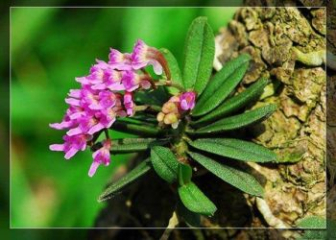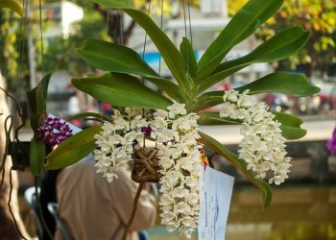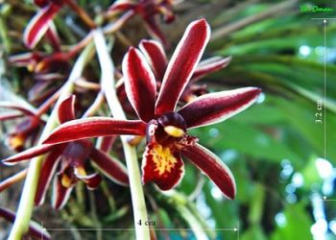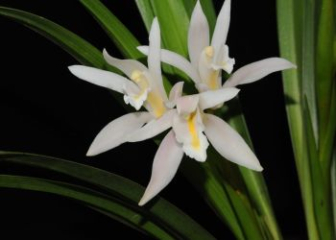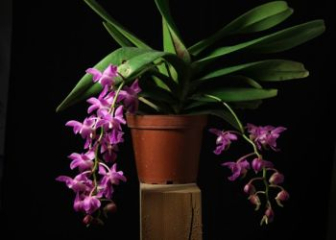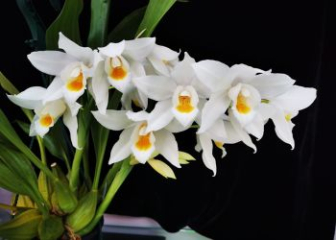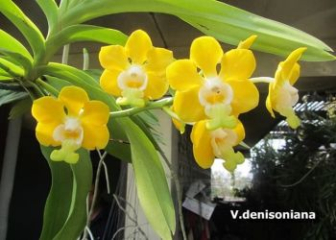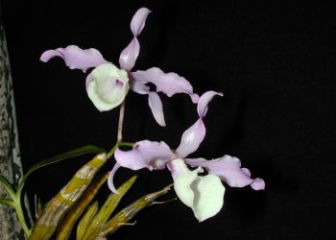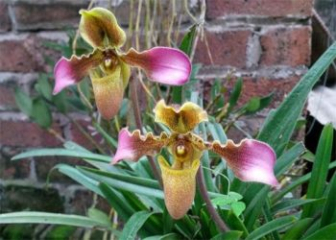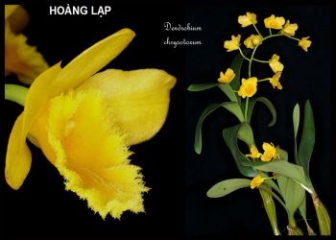Long-petaled Orchid - The most detailed planting & care techniques
Blog | by
Long-petaled orchid (Bulbophyllum kanburiense) is a rare wild orchid species with long, thin, curved petals like a prominent orange silk strip, very difficult to adapt and difficult to grow.
Long-petaled Orchid (scientific name: Bulbophyllum kanburiense) is a wild orchid endemic to Southeast Asia, notable for its long, thin, soft petals like a curved silk strip, with a very high collectible value. Thanks to its impressive appearance, Bulbophyllum kanburiense is always a rare orchid species sought after by professional orchid enthusiasts.
If you want to learn more about the origin, characteristics and techniques of growing Long-winged orchids, don't miss the article shared by wild orchid below!
Origin of Long-petaled Orchid
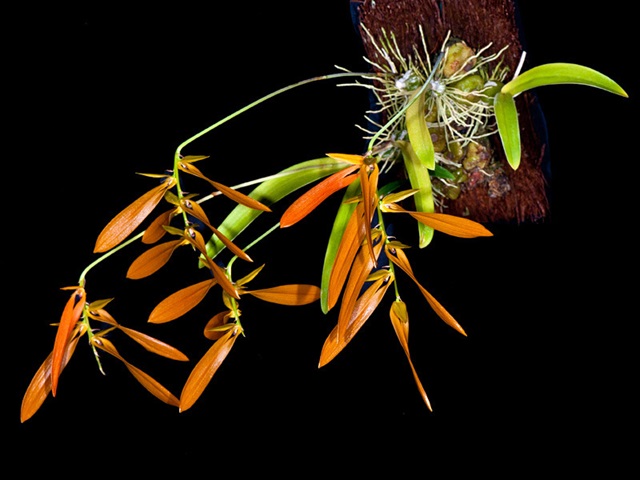
A long-petaled orchid grows from a rock outcrop.
Long-petaled orchid, also known as slender-petaled orchid, long-stared orchid, scientific name is Bulbophyllum kanburiense. This is an orchid species endemic to Southeast Asia, discovered and scientifically described in 1981 in Thailand, currently widely distributed in the following countries:
- Thailand: Kanchanaburi Mountain Area, Chiang Mai
- Vietnam (rare): Kon Tum, Lam Dong, Bidoup conservation area, Chu Yang Sin
- Southeast Myanmar, Laos (bordering Thailand)
In nature, long-winged orchids often live on large tree trunks and mossy rocks at an altitude of 800 - 1500m above sea level, where the climate is humid and cool all year round, with 60-70% scattered light.
Signs to identify long-petaled orchid
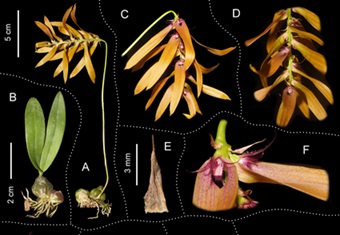
Close-up of the roots, stem, leaves and flowers of the Long-winged Orchid.
Let's learn in detail the characteristics of the stem, roots, leaves and flowers of the Long-winged Parasol orchid to help you easily recognize this orchid species among other Parasol orchid species.
Body :
- Pseudobulb stem (bulb stem), round or oblong, 2 - 3 cm high
- Growing along the substrate in a horizontal rhizome style
- Light green in color, turns yellowish brown when old, covered with a thin layer of silk.
Leaves :
- Each pseudobulb bears a single leaf, the leaf is elongated elliptical, the tip is slightly blunt.
- Leaves are 10 - 20 cm long and 2 - 3 cm wide.
- Thick, glossy, dark green leaves
Flower :
- The proboscis grows from the base of the pseudobulb, is 20 - 30 cm long, small, soft, and curved.
- Each flower spike usually has 6 - 15 small flowers, growing around the axis.
- The lower petals are very long, from 7 - 10 cm, thin like ribbons, slightly curved at the tip, light orange, red orange or bronze, depending on climate conditions.
- The upper petals are much smaller, slightly pointed, and the color is the same as the lower petals.
- The flower lip is very short, hairy, slightly curved, and usually yellow or pale orange.
- Flowers have very light fragrance or no scent
- Flowers usually bloom from August to November, flowers bloom for 5 - 7 days, depending on the weather.
Techniques for growing and caring for long-petaled orchids from A to Z
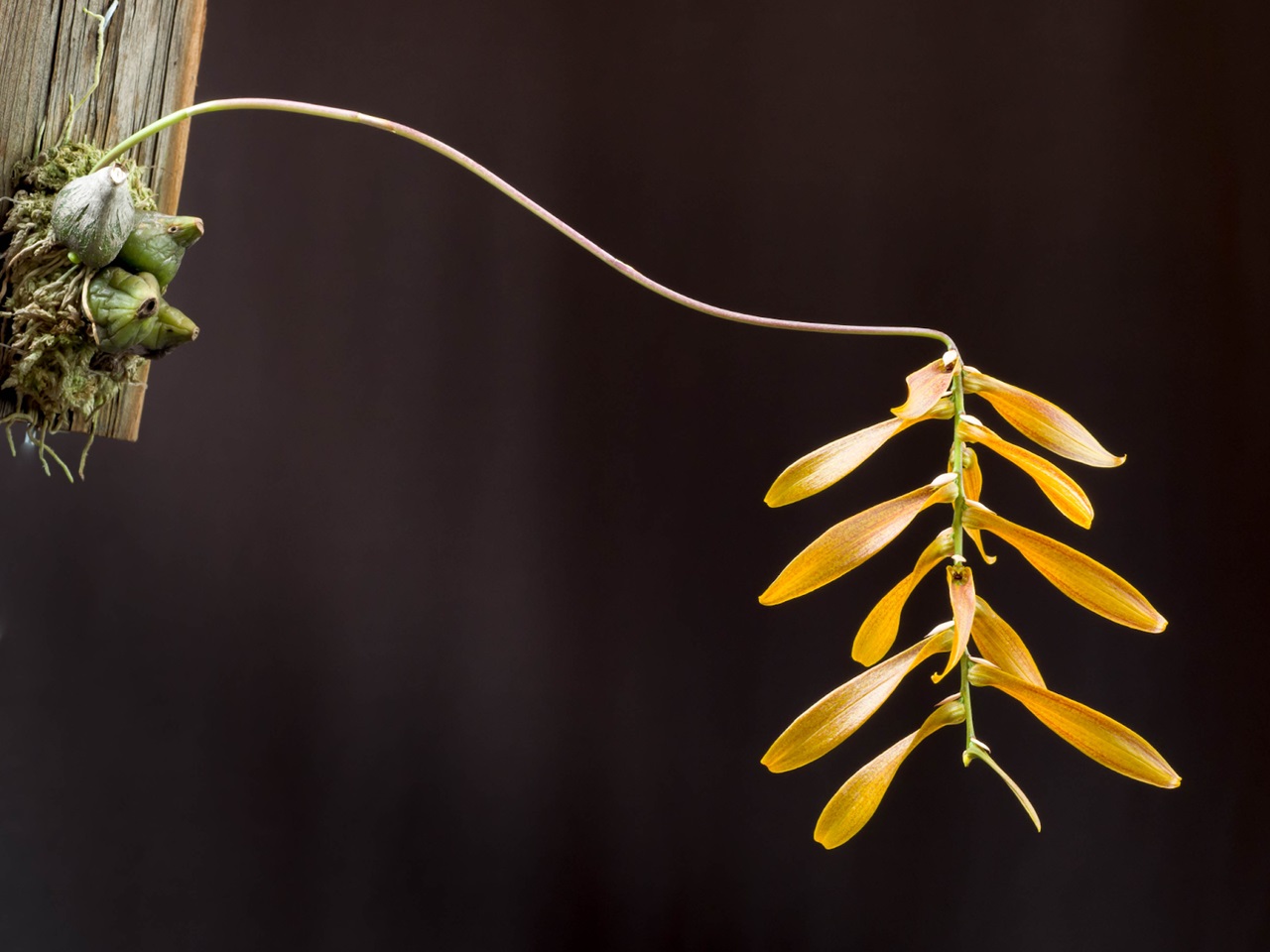
Detailed instructions on growing long-petaled orchids.
Long-petaled parasol orchid is not an easy orchid to grow and it is completely unsuitable for those who do not have much experience. However, do not worry too much because right below we have shared details about the technique of growing & caring for this special parasol orchid, let's find out now!
Preparation before planting long-petaled orchid
Before planting long-petaled orchids, you need to have basic preparation steps such as choosing the breed, choosing the substrate and preliminary processing. Specifically as follows:
Choose good breed:
- Priority is given to seedlings separated from healthy mother bushes or seedlings grown from well-developed roots and shoots.
- Choose seedlings with no signs of pests or diseases, plump pseudobulbs, no wrinkles, hard, shiny leaves, and strong roots.
Seed treatment :
- Trim yellow leaves, damaged roots, damaged or rotten pseudobulbs
- Soak seedlings in Physan 20 or Benkona solution to disinfect and sterilize.
- Soak the base and roots of the tree in B1 or Atonnik solution to stimulate roots (if necessary).
- Then leave the seedlings in a cool, windy place for 1-2 days, just spray mist to keep moist.
Select substrate :
- Requirements for growing medium : Good drainage, airy, relatively humid
- Optimal growing medium : longan wood, star apple wood, coconut fiber, charcoal, pine bark, forest moss,...
Substrate treatment :
- Soak charcoal in clean water for 2 - 3 days or boil quickly for 5 - 10 minutes then dry.
- Soak pine bark in lime water or clean water for 3 - 5 days then dry.
- Driftwood needs to have its outer bark scraped off, soaked in lime water and then dried in the sun for 3-5 days.
- Suggested substrate mix: 30% charcoal + 30% pine bark + 20% shredded coconut husk + 20% forest moss
Long-petaled orchid growing techniques
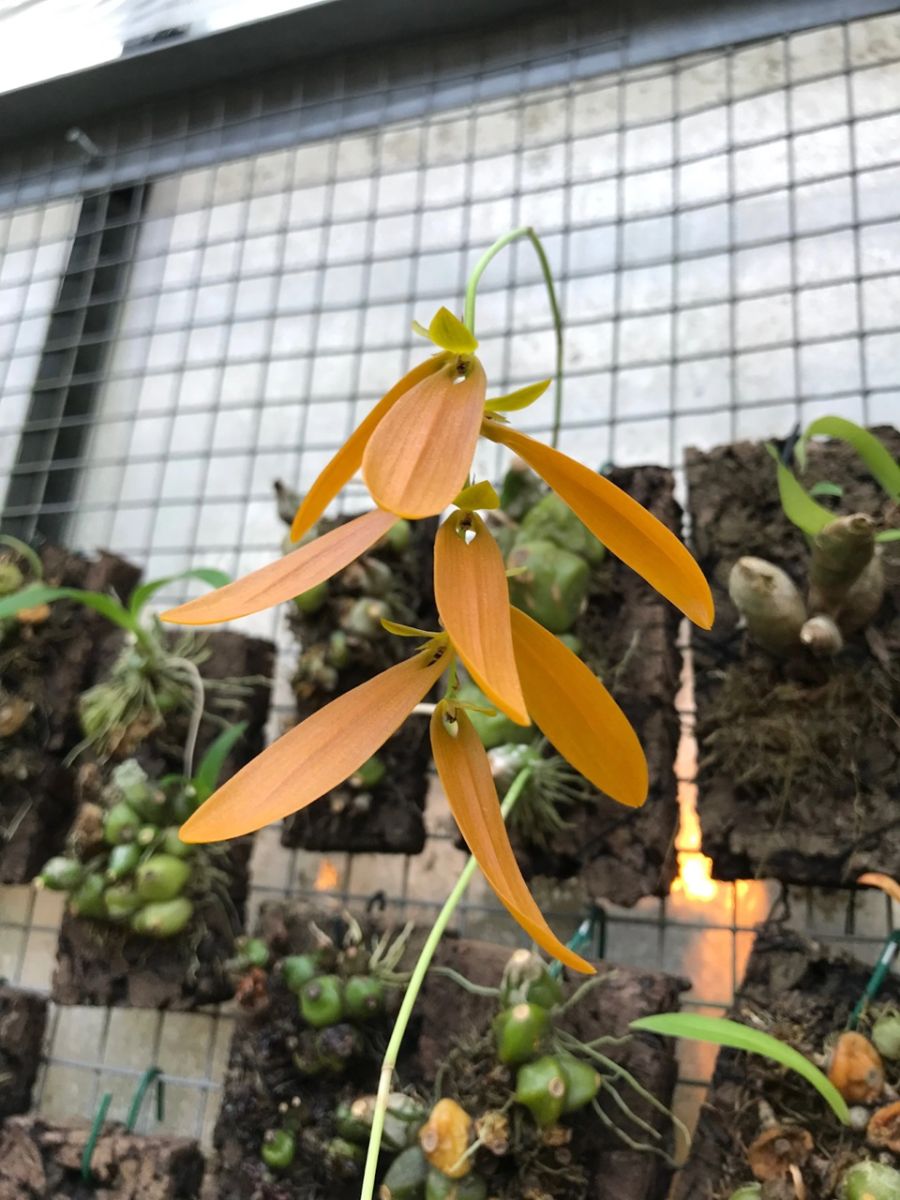
Long-petaled orchid seedlings are artistically grafted onto wood.
Long-petaled orchids can be grown in two ways: in pots or grafted onto driftwood/coir boards, depending on your needs and preferences. However, no matter which method you use, you need to master the technique to help the orchid pot take root soon and grow well. Please follow the instructions below.
Growing Long-petaled Orchid in pots :
- Line the bottom of the pot with a layer of large charcoal and porous rocks.
- Place the seedling in the middle of the pot, fill the growing medium around the base, do not fill too tightly.
- After 2 days, spray lightly.
Grafting Long-petaled Orchid on wood/coir :
- Place the Long-petaled orchid pseudobulb close to the growing medium, with the roots close to the growing medium.
- Use a rope to fix the orchid roots to the wooden board or coconut fiber (Tighten gently to avoid crushing the roots and stems).
- Add a little moist moss to keep the orchid roots moist.
- Hang the plant in a cool, humid place. Spray lightly after 2 days.
How to care for long-petaled orchids
Although the Long-winged Orchid grows quite slowly, if you know how to care for it properly, it can help the plant grow strong roots and bloom easily. Please follow the instructions below.
Optimal living environment :
- Light : 50 - 60% diffused light, plant in shady place
- Temperature : 18 - 28 degrees C
- Humidity : 70 - 90%
- Ventilation : Good air circulation, airy
Watering properly :
- Dry season : Water 1 - 2 times/day, depending on ventilation
- Rainy season : reduce watering, 3 - 4 times/week, depending on the weather
- Note : Only water when the growing medium is dry, do not water too much at night, avoid letting water accumulate at the top of the pseudobulb or between leaves.
Fertilize appropriately - with the right dosage :
- Growth stage : Fertilize with NPK 30-10-10, B1/Atonik every 2 weeks
- Pre-flowering and flowering stages : NPK 10-30-20, Dau Trau 701 fertilizer, slow-release organic fertilizer,...
- Maintenance fertilization : Use organic fertilizers such as vermicompost, dry goat manure, and fish protein in rotation about once a month to provide additional nutrients for Long-winged Parasol orchids.
Pruning and caring for growing media :
- Regularly trim yellow leaves and damaged pseudobulbs.
- Clean moss and mold that appear on the substrate (especially after the rainy season)
- About every 1.5 - 2 years, you should change the substrate/pot once.
Disease prevention for Long-winged Orchid :
- Fungal prevention: Spray Physan 20, diluted Ridomil Gol every 20 days.
- Bedbug Control: Rotate sprays with Confidor. Radiant.
How much is the long-petaled orchid?
Long-winged parasol orchid (Bulbophyllum kanburiense) is a rare wild orchid species and has not been widely propagated in Vietnam, so the current selling price of this orchid species is quite high, fluctuating depending on the origin, age and purity of the orchid. For detailed information, please refer to the following price list.
|
Long-petaled orchid |
Reference price (VND) |
Note |
|
Long-stemmed parasols harvested from the forest |
400,000 - 700,000 VND/dust |
Not pure, difficult to grow, need to verify origin |
|
Pure long-winged parasol |
600,000 - 1,500,000 VND/pot |
Easy to care for, ready to bloom |
|
Long-winged parasol collectible |
2,000,000 - 3,000,000 VND/pot |
Rare, beautiful, highly collectible |
Note :
- Long-petaled orchids are not sold widely, usually only sold in wild orchid groups or reputable orchid gardens.
- When buying, you need to verify the origin because this is one of the rare wild orchid lines that needs to be protected.
Questions and answers about Long-petaled orchid?
Is the long-stemmed orchid easy to grow?
Long-stemmed orchids are not easy to grow if you do not have experience in caring for wild orchids. However, if you grasp the basic orchid growing and care techniques we shared above, it will not be too difficult.
What month does the long-petaled orchid bloom?
Long-petaled orchids usually bloom in late spring - early dry season, around August - November, depending on care conditions.
Are long-petaled orchids fragrant?
The flowers of the Long-petaled orchid have no distinct scent, or are even odorless.
Beautiful long-petaled orchid image
We invite you to admire the collection of the most beautiful Long-petaled Orchid images with flowers of strange beauty, long, curved, artistic petals that captivate many orchid players.
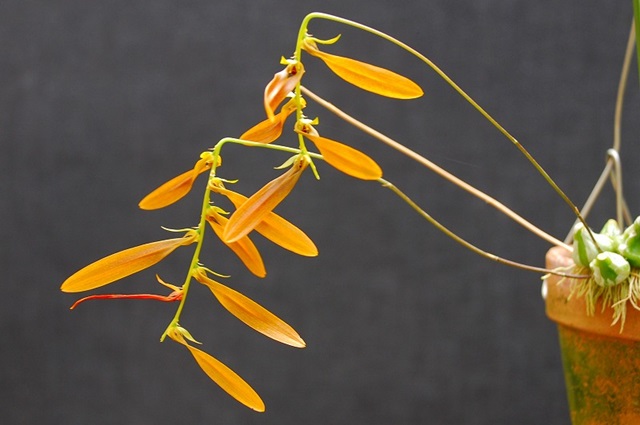
Long-petaled orchids with fragile beauty.

A clump of long-petaled orchids is in bloom.
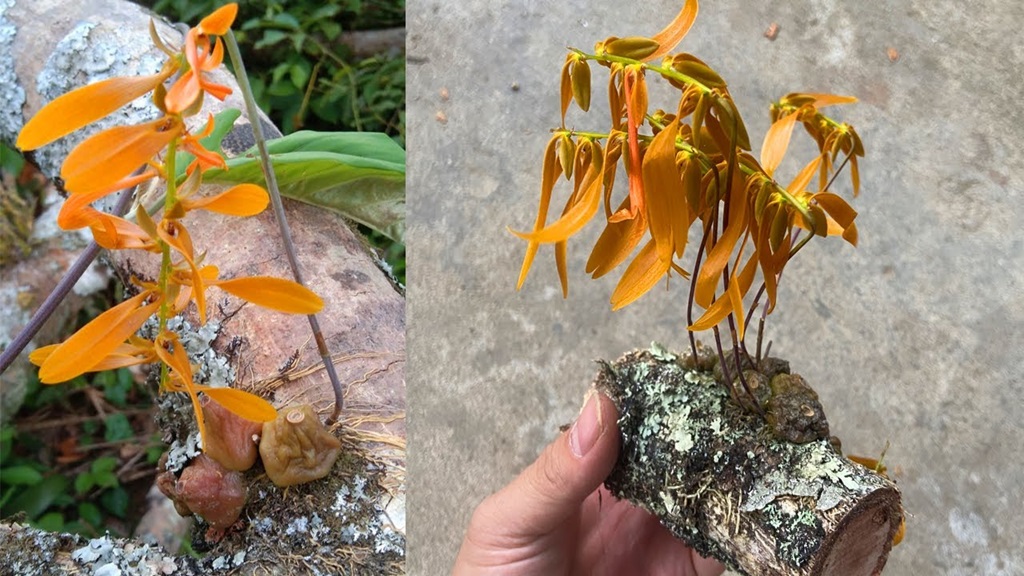
Long-winged orchid roots growing in the wild.

A giant long-winged orchid bush grows parasitically on a tree trunk.
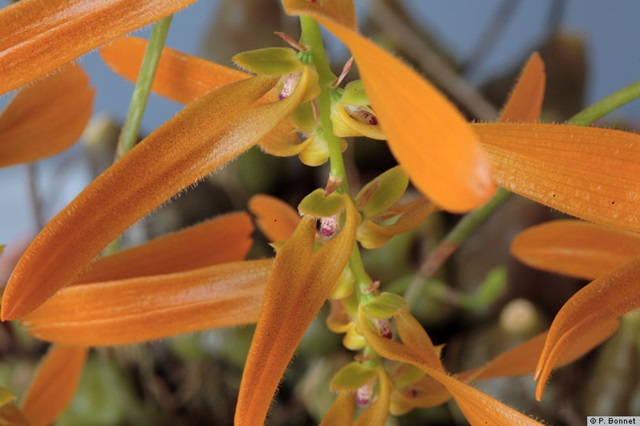
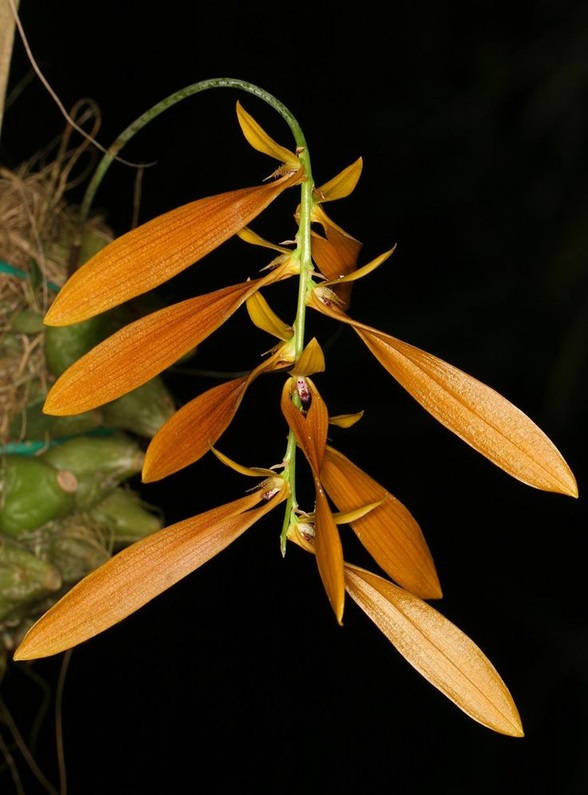
Close-up of the flower face of the Long-petaled orchid.

Long-petaled Parasol orchids with vibrant orange color.
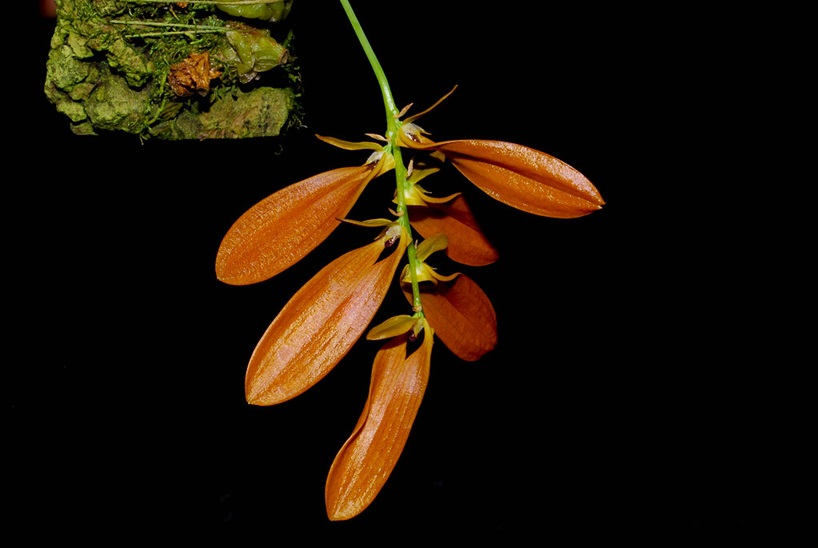
The "strange" beauty of the long-petaled orchid.
Through the above article, orchid-vn.com has shared detailed information about the long-winged orchid (Bulbophyllum kanburiense) - A rare wild orchid with a unique shape that looks like soft, curved silk strips. Although this orchid is not easy to grow and is only suitable for those with a lot of experience, in return you will own a beautiful - unique - strange orchid pot that makes everyone admire, it is worth it, right?
Don't forget to visit our Blog section regularly to learn more about many other beautiful and impressive orchid species.
